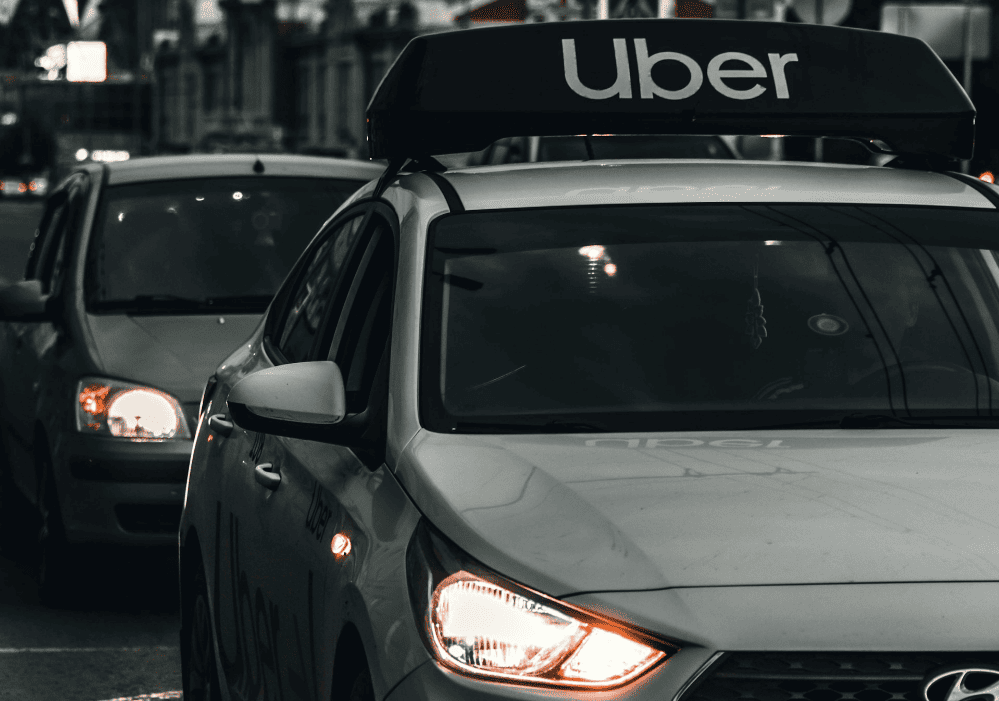
Ridesharing services like Uber and Lyft are becoming increasingly popular and have transformed the way you can travel to, from, and around New York. However, rideshare accidents are not uncommon, and they present unique legal challenges compared to typical car accidents.
The steps you take following a rideshare accident matter – whether you are a passenger, driver, or pedestrian. The steps you take following an Uber or Lyft car accident can affect your health and your ability to recover compensation.
If you have been injured in a ridesharing accident, one of the best things you can do to protect your rights is to contact a personal injury lawyer. Call Hauptman, O’Brien, Wolf, & Lathrop 24/7 at (402) 241-5020 today to schedule a free case review.
1. Check for Injuries
Assess yourself, other passengers, and drivers for injuries. If anyone is injured, call 911 right away and request medical assistance.
Even if your injuries seem minor, it is important to seek medical treatment. Some injuries, such as whiplash or a concussion, may not manifest symptoms until hours or days later.
2. Move to Safety
If your vehicles are still operational and it is safe to do so, move them out of the way of traffic to prevent further accidents.
On the other hand, if it is unsafe to move the vehicles, turn on your hazard lights and keep them out of harm’s way until help arrives.
3. Contact the Police
Contact the police immediately following the rideshare accident and request that an officer be sent to the scene. The officer will document the car accident and record important details about the crash.
When the police arrive, provide them with a clear and factual account of the incident. Avoid assigning blame or admitting fault.
Police reports can serve as important evidence when filing an insurance claim or lawsuit.
4. Document the Accident Scene
Your memory of the details of the Lyft or Uber accident will fade over time. You may begin to forget who exactly was involved in the incident and how it unfolded.
Thorough documentation of the scene of the accident can be essential to your claim. You should:
- Take photos or videos: Capture images of the vehicles involved, the damage, road conditions, traffic signs, and injuries. Try to get different angles for a complete view of the accident scene.
- Exchange contact information: Make sure to obtain the rideshare driver’s information. Obtain the name, phone number, address, driver’s license number, and insurance details of not only the rideshare driver but also any other drivers involved in the car accident.
- Collect witness information: If there were eyewitnesses to the accident, get their contact details. Witnesses can provide testimony that supports your version of events.
- Document rideshare details: Make a note of the rideshare company, the driver’s name, and the vehicle’s make and model. If you are a passenger, screenshot your app’s ride details to preserve a record of the trip.
Evidence gathered at accident scenes can be helpful for personal injury claims. Your personal injury lawyer can use the information you have collected as a baseline for his or her own thorough investigation.
5. Report Accidents to Rideshare Companies
Statistics indicate that US ridesharing profits are expected to rise to over $54 billion annually by 2027. As the popularity of ridesharing services increases, so does the risk of accidents involving them.
Large ridesharing companies like Uber and Lyft are prepared for accidents involving their vehicles by having protocols in place for reporting accidents. You can report the car accident to the rideshare company through their app or website.
Be sure to document the report by taking screenshots of all correspondence with the rideshare company. This step is important for any claims or legal actions involving the company’s insurance.
6. Know the Rideshare Company’s Insurance Coverage
Rideshare companies like Lyft and Uber typically offer insurance coverage for accidents involving their drivers. However, coverage varies based on the circumstances of the auto accident. Lyft and Uber have similar insurance coverage.
The following is a brief breakdown of Lyft’s insurance coverage:
- The driver was not logged into the Lyft app. If the driver was not logged into the Lyft app at the time of the car accident, then Lyft is not responsible for damages. You will need to pursue compensation through the driver’s personal insurance policy.
- The app is on, and rideshare drivers are awaiting ride requests. You should be eligible for Lyft’s limited liability coverage. This covers $50,000 per person for bodily injury, $100,000 per accident for bodily injury, and $25,000 per accident for property damage.
- The driver was logged into the app and accepted a ride request. In most markets, once a driver accepts a rideshare request, Lyft’s $1 million insurance policy should go into effect. This coverage may start when the driver is en route, or the passenger is picked up and extends until the trip is completed.
It is important to know how this insurance structure works to understand who may be responsible for covering your financial losses.
7. Notify Your Insurance Company
While Uber or Lyft’s insurance policies usually cover passenger injuries, it is still recommended to notify your own insurance provider about the incident, especially if you were driving your own vehicle when the accident occurred.
When notifying your insurance company, be sure to:
- Provide accurate details: Share all relevant information with your insurance company, but avoid speculating who was at fault. Let the facts speak for themselves.
- Understand your insurance policy: If you were an Uber or Lyft passenger, your personal auto insurance may not be involved unless the rideshare company’s coverage is exhausted or insufficient. However, if you were driving your own vehicle or were another motorist involved in the crash, your policy could come into play, depending on the circumstances.
- Avoid settling before consulting a lawyer: Before agreeing to any settlement or making formal statements, consult a rideshare accident lawyer. Insurance companies may try to offer quick settlements that don’t cover the full extent of your damages.
8. Contact a Rideshare Accident Lawyer
Recovering compensation following a rideshare accident can be complicated. Multiple parties may be involved, including the rideshare company, the Uber or Lyft driver, and other drivers.
Hiring a personal injury lawyer can ensure that your legal rights are protected and that you receive the compensation you deserve.
Here are some reasons why hiring a personal injury attorney is important:
- Understanding liability: Determining who is at fault in a ridesharing accident can be complicated. A car accident lawyer can help you identify whether the Uber or Lyft driver, another driver, or the rideshare company’s insurance company is responsible for paying your damages.
- Evaluate your rideshare accident claim: A car accident lawyer can help assess the extent of your damages, including medical expenses, lost wages, pain and suffering, and future medical care.
- Insurance company negotiations: Insurance companies often try to minimize payouts. A skilled car accident attorney will know how to negotiate on your behalf, ensuring that you receive fair compensation for your medical bills, lost wages, and other damages.
- File a personal injury lawsuit if necessary: If the insurance companies refuse to offer fair compensation, your rideshare accident attorney may recommend filing a lawsuit to seek justice in court.
9. Avoid Posting on Social Media
If you have been in an accident involving a rideshare driver, you might be tempted to post about your experience on social media. However, this can do more harm than good when it comes to your insurance claim.
Insurance companies and defense lawyers may monitor social media activity in an attempt to find something that can be used to dispute your injuries or otherwise diminish your compensation. Even seemingly harmless posts, such as pictures of you attending an event or a status update about your day, can be taken out of context.
In short, almost anything you post could be used to argue that your injuries are not as severe as you claim. For this reason, it is recommended that you avoid posting until your case is resolved.
10. Keep Detailed Records
Keeping detailed records of everything pertaining to your personal injury case will help strengthen your claim.
Potential records include:
- Medical bills and treatment records
- Communication with the at-fault parties, insurance companies, and rideshare companies
- Documentation of missed work or lost income
- Any additional expenses related to the car accident
Some accident victims keep a journal recording their physical and emotional recovery process. This can provide insight into the impact of the rideshare accident on your daily life and help support your claim for non-economic damages like pain and suffering.
Schedule a Free Consultation With Our Rideshare Accident Lawyers Today
In the event of an accident involving an Uber or Lyft driver, taking the right steps can ensure your physical safety and strengthen your claim. If you are unsure what to do after a rideshare accident, please don’t hesitate to contact our law firm today.
At Hauptman, O’Brien, Wolf, & Lathrop, we understand that a rideshare accident can be overwhelming and stressful. We care about our clients and constantly work with their best interests in mind. If we cannot negotiate a fair settlement to cover your losses, we will be prepared to take your case to court.
Our attorneys take all personal injury cases on a contingency fee basis. You pay no upfront costs or fees. Call Hauptman, O’Brien, Wolf, & Lathrop at(402) 241-5020 or complete our contact form to schedule a free consultation, and someone will get in touch with you shortly.


Personal injury law, it’s all they do